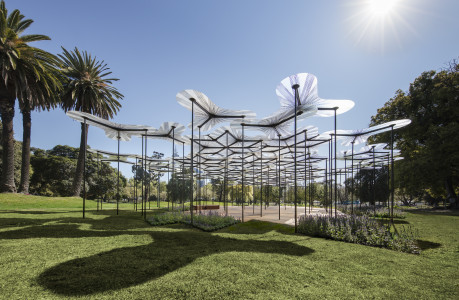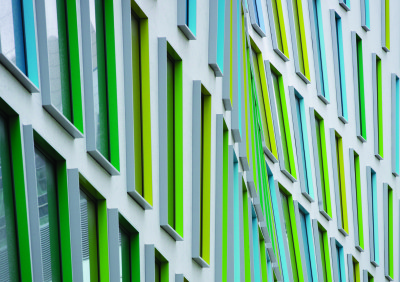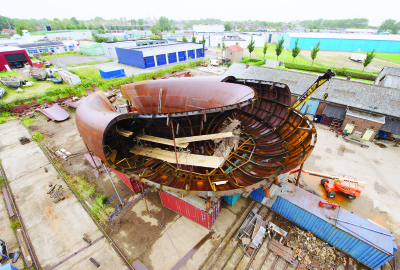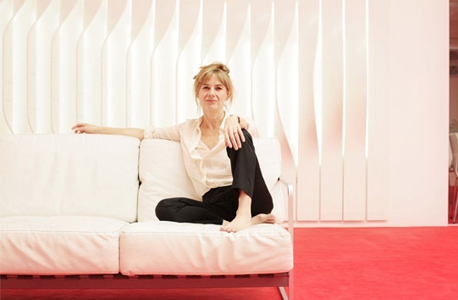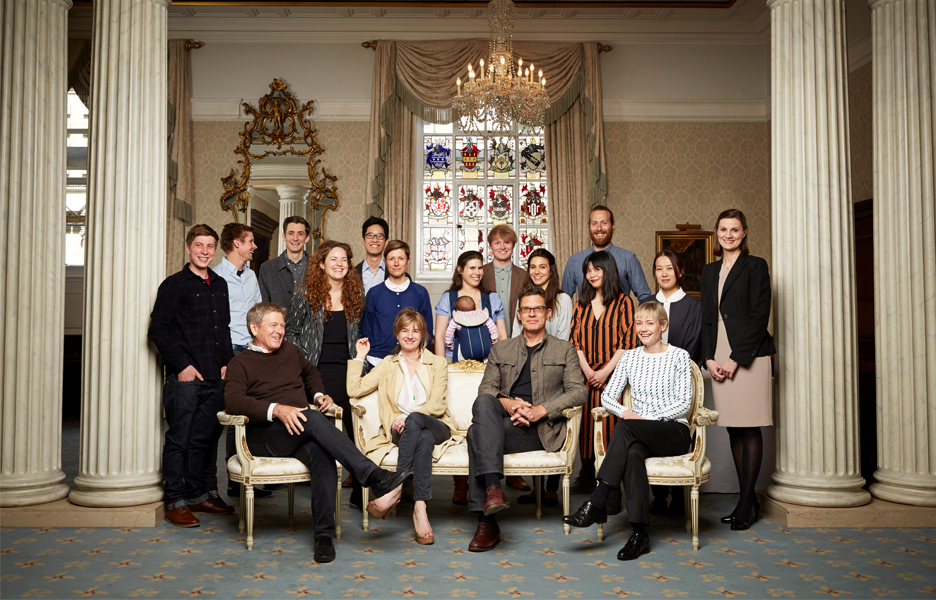
When architecture meets sculpture
When architecture meets sculpture
Share
Above image: UTS Thomas Street building by Durbach Block Jaggers and BVN Architecture. Image courtesy Anthony Browell.
This feature article by Penny Craswell features in AR141: The Sean Godsell Special Feature issue.
This year, for the first time, an architecture studio has been shortlisted for the prestigious and sometimes controversial contemporary art award, the Turner Prize. Assemble, a collective of 18 graduate architects in their mid-20s, has been shortlisted for its Granby Four Streets project, a community rejuvenation project in Liverpool’s Toxteth. Assemble never claimed to be artists and the announcement came as something of a shock to the group. This is at least in part because the worlds of architecture and contemporary art rarely collide. Certainly architects and artists go to different schools, are awarded different prizes, read different magazines and rarely mix. This is despite the fact that there are many overlapping principles in concept, materiality and form, particularly between architecture and sculpture.
Architects are frequently sceptical of the term ‘sculptural’ when used in relation to buildings and there is good reason for this. When the ‘starchitect’ phenomenon took off, it was the stylistic form of the building that provided a signature for the starchitect as much as the name itself. Starchitects trade on their name to create a brand for themselves that not only signifies their work – or the work of their practice – but also offers a signature style. This is most often seen in the design of museums.
Cultural geographer, Shiloh Krupar, and architect and curator, Stefan Al, examine the concept of the starchitect as brand in more detail in ‘Notes on the Society of the Spectacle/Brand’, using Guy Debord’s The Society of the Spectacle to understand the phenomenon. They argue that Debord’s spectacle – the commoditisation of social relationships that turns us into passive consumers, watching the spectacular image, rendered meaningless – has been fully realised as the corporate brand. In turn, they assert that architecture is a crucial element in the brand experience; the corporatisation of the architecture profession, in combination with the facilitation of the architect-celebrity or starchitect through the media, has spectacularised architecture.
So, according to this theory, the stylised, sculptural aspect of the architecture becomes the starchitect’s signature, branding the building and thereby rendering it meaningless. However, the creation of a building that is sculptural should not be demonised in this way. It is only when the architect uses aesthetics for aesthetics’ sake, regardless of the functional implications, that it is detrimental to architectural practice.
Sydney-based architect Neil Durbach makes this point in relation to the UTS Thomas Street building, designed by Durbach Block Jaggers and BVN Architecture. For him, architecture is always sculptural: “Generally architecture really is thought of and created in the round as a three-dimensional object. In that sense it is always sculptural, whether it’s as wobbly as jelly or as straight as a die.”
The building, housing the Faculty of Science and Graduate School of Health, replaces a rigid, rational grid of spaces with a more fluid design that aims to connect students. Most distinctive is a curving white facade punctuated by 700 box windows. For Durbach, the less interesting and less enduring projects occupy both ends of the scale when it comes to their relation to the sculptural. At one end there are those that create aesthetics for aesthetics sake – that are “formally spurious and willful and self-absorbed’ and at the other there are those that are ‘timid and vanilla”.
The fundamental difference between architecture and sculpture, almost without exception, is that architecture is functional – it is for sheltering people. It provides somewhere to sleep, work, eat and drink, socialise, shop, view art or listen to music. Architecture also performs other roles – the aesthetic and the symbolic. It can be used for nation building, to unite communities, to inspire, even to create wealth. Sculpture, like art, is not functional in the same way.
For this reason, architects are faced with many more constraints than sculptors, resulting in a more complex challenge to negotiate. For UK-based architect Amanda Levete, architecture is the resolution of competing tensions through design. Levete collaborated with UK-based sculptor Anish Kapoor on the Monte St Angelo subway station in Naples, Italy, a project that started with a sculptural process and was shaped by the layers of program that were introduced.
A network of unfinished tunnels was the starting point of the project. Concrete shells provided the inspiration for two new openings, one seeming to have been pulled from the earth and one appearing to slip back down, dramatising the act of descent.
“The challenge was holding onto the integrity of the forms, while resolving the hugely demanding technical, infrastructural and logistical complexities of a public station,” says Levete. “It was this idea of resistance as a positive force that I think is the fundamental difference between art and architecture.”
If architecture is the challenge of constraints in tension with purity of form, then sculpture can also be a freeing medium. For Stefanie Flaubert, who worked as an architect for 12 years before forming sculptural studio Korban/Flaubert in Sydney with partner Janos Korban, moving into the realm of sculpture meant there was an opportunity to work in a more focused way on single ideas.
“Sculpture was a step into the unknown,” says Flaubert. “It allowed us to get back into the centre of content, form and expression, liberated from the limits of function. This idea of the separation and liberation of form from function came from Günter Behnisch, whose office I worked at in the 1990s, letting form fall out of the exploration of the idea and context. I worked on this in architecture but find it happens more easily and logically in sculpture.”
A recent sculptural work by Korban/Flaubert, Hunter, in rusted corten steel, features what Flaubert refers to as ‘fast lines’, exploring ideas such as emptiness, anxiety, erosion and loss. ‘What are the limits of this ductile fascinating material?’ asks Flaubert. “What are the limits of expression? What are the limits of pain and love? These are not common subjects for architecture.”
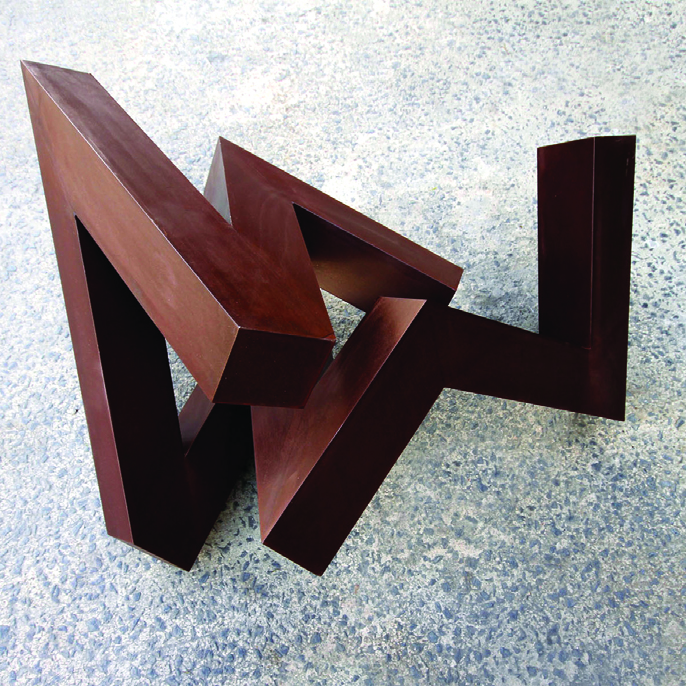
Stalker sculpture by Korban/ Flaubert, 2013, corten steel, 1400 x 1200 x 1560mm. Image courtesy Korban Flaubert.
Rather than being freed from the constraints of architecture, other sculptors take the subject of architecture as a starting point for their practice. Anish Kapoor is one who famously engages with architecture, as is Danish-Icelandic artist Olafur Eliasson. But probably the best example of this type of sculptor is UK-based artist Rachel Whiteread, who produces casts of buildings and rooms, including her seminal work House, a cast of an entire Victorian terrace house.
For Whiteread, architecture is the place where life happens, engaging with architecture, she says, because it is personal. “[House] was about where we live, where we come from, where we sleep, where we have families. I think it therefore shrank and became much smaller than its physical space. If you stood beneath House, it was monumental, but when you walked a little bit down the street, it just looked kind of pathetic.”
Interestingly, House won the Turner Prize in 1993 – a sculptor creating work about architecture, which brings us back to Assemble, now the first architecture practice shortlisted for the same contemporary art prize. While I have explored the overlap of sculpture and architecture, in reality the communication between the two professions remains profoundly limited. Each has their own mandate: for architects it is to create the buildings and cities we live in, dealing with building codes and clients, and for sculptors and artists it is to interrogate ideas, the world, even form itself.
For architects, far from being snobbish about the term ‘sculptural’, the best course of action would be to interrogate the ideas and inspiration behind the work of sculpture, not to mention finding out what can be learnt about form and materiality from a profession that is also ‘designing in the round’.
This feature article by Penny Craswell features in AR141: The Sean Godsell Special Feature issue.
You Might also Like
